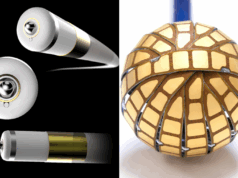Survival for out-of-hospital cardiac arrest is just 7%, according to research presented at ESC congress 2013 by Xavier Jouven, Hopital Georges Pompidou, Paris, France and Wulfran Bougouin, Paris, France.
Jouven said: “Sudden cardiac death (SCD) is an important public health problem, accounting for more than 400,000 deaths every year. The main cause is ventricular tachyarrhythmias which are often triggered by acute ischaemic events that can occur in persons with or without known heart disease. The survival rate from cardiac arrest has remained low over the last 40 years despite major investment and the epidemiology of SCD in Western Europe is unclear.”
The Paris Sudden Death Expertise Centre (SDEC) Registry is a population based registry using multiple sources to collect every case of cardiac arrest in Greater Paris (population 6.6 million) according to the Utstein Style.1 Cases are continuously recorded (within hours of occurrence) and standardised follow-up is initiated on admission to the intensive care unit. Incidence, prognostic factors and outcomes are recorded.
The results reported revealed the two year experience of the SDEC Registry. From May 2011 to December 2012, 3,670 sudden cardiac arrests, with resuscitation attempted, occurred. Most cases occurred at home (72%) with bystanders in 81% of cases, performing cardiopulmonary resuscitation (CPR) in only 42% of cases. Among those cases, only 34% of patients were admitted alive at hospital and 7% were discharged alive.
“The majority of sudden cardiac deaths occur outside hospital so specific programmes are needed in the community. Friends and relatives of people at risk of SCD should learn CPR and attend regular training to keep their skills up-to-date,” said Jouven.
Therapeutic hypothermia and early coronary reperfusion were both significantly associated with survival (p<0.001) but these procedures were used in just 58% of patients admitted to hospital. Jouven said: “These interventions markedly improve survival yet are given to just over half of patients. Most patients should receive both.”
Prognostic factors were initial shockable rhythm (odds ratio [OR]=15.7, 95% confidence interval [CI]=9.0-27.3), age (OR=0.96, 95%CI=0.95-0.98), occurrence at home (OR=0.5, 95%CI=0.3-0.8) and epinephrine (adrenaline) dose >3mg (OR=0.07, 95%CI=0.04-0.1). “Having a cardiac arrest at home decreases the change of survival by half. People whose initial heart rhythm is shockable have a nearly 16 times greater chance of survival than those with an initial non-shockable rhythm because they can receive immediate defibrillation.” said Jouven.
He added: “The incidence of sudden cardiac arrest was lower than levels reported in previous studies, possibly because of the adjudication process considering only typical phenotype of sudden cardiac death (with also a high specificity), although local specificities of population characteristics could also be involved. As expected, prognosis was poor with just 7% of patients surviving out-of-hospital cardiac arrest.”
Jouven concluded: “Sudden cardiac death is a multidisciplinary field which includes cardiology, emergency medicine, intensive care units, psychology, ethics, public health and medico-economics. At the SDEC all of these competencies are working together to understand and prevent sudden cardiac death. Improving outcomes requires addressing the entire picture of sudden death through population education on basic life support, optimising care, prevention and screening of first degree relatives.”









